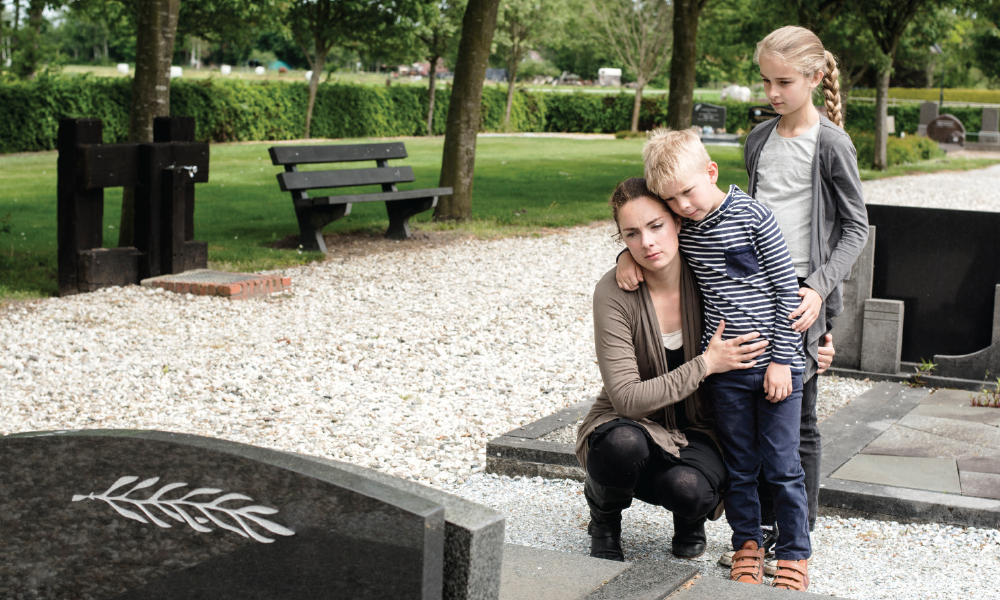
How Can Families Practice the Works of Mercy?: Bury the Dead
“I was hungry and you gave me food, I was thirsty and you gave me drink, a stranger and you welcomed me, naked and you clothed me, ill and you cared for me, in prison and you visited me.”
“I was hungry and you gave me food, I was thirsty and you gave me drink, a stranger and you welcomed me, naked and you clothed me, ill and you cared for me, in prison and you visited me.”
November 7, 2022 | Jesus’ powerful words in the Gospel of Matthew form the basis for the traditional list of the works of mercy. When it comes to meeting physical needs, the Compendium of the Catechism of the Catholic Church lists the following actions as the corporal works of mercy:
- Feed the hungry
- Give drink to the thirsty
- Clothe the naked
- Shelter the homeless
- Visit the sick
- Visit the imprisoned
- Bury the dead
How can families live this out? Especially with young children, hands-on charitable work can be daunting, but not impossible. The works of mercy will look different for each family – and can be practiced very literally when it comes to caring for children! But if you have a desire to introduce your children to acts of charity outside the home, I hope these ideas can be a gentle nudge to step out as the domestic Church and seek encounters with those in need.
Bury the Dead
Yes, your family can practice the work of mercy of burying the dead.
Let’s take a step back and consider how the Catholic Church accompanies those who have died and their mourning loved ones. The Order of Christian Funerals says:
“Christian consolation is rooted in that hope that comes from faith in the saving death and resurrection of the Lord Jesus Christ. … The Church calls each member of Christ’s Body – priest, deacon, layperson – to participate in the ministry of consolation: to care for the dying, to pray for the dead, to comfort those who mourn.”
How can families enter into the ministry of consolation?
Beginning with All Saints Day on Nov. 1 and All Souls Day on Nov. 2, November is a very appropriate time to pray for the deceased. Take a walk through a cemetery and pray a rosary for those buried there. Especially in historic cemeteries, encourage your children to look for the oldest dates and recognize Christian symbols on gravestones. Pray for those who may have been forgotten – perhaps those with the most faded gravestones – and have no one else to intercede for them.
Tending to the orderliness of gravesites honors the dignity of the deceased. Is your parish attached to a cemetery? Organize a cleanup day with other families – this is a great outdoor service opportunity for young children who can rake leaves or remove dried flowers or Christmas wreaths.
Does your parish need help hosting funeral lunches after a service? If you can bake a sheet pan’s worth of brownies with a few days’ notice, consider it a hidden act of charity and a way to offer consolation without directly knowing the deceased.
The Order of Christian Funerals continues to say that members of the community should console the mourners with words of faith and support and with acts of kindness. This is the layperson’s time to step up and offer help such as scheduling meal deliveries for the family or performing other chores such as yardwork. Consider the tasks you do every day and might take for granted: Could your family take on one of these tasks for a family in your faith community during their time of mourning?
Finally, if you’re ever on the fence about taking children to a funeral Mass, I encourage you to do so. This does require discernment of the grieving family’s situation and your children’s sensitivity, as well as preparing your children for what they can expect to see. But the Catholic funeral liturgy is a powerful reminder of our hope in Jesus' victory over death. Participating in a funeral Mass is the primary way we can practice the “ministry of consolation,” and even a young child’s fumbled Our Father or mere presence in the pew is part of that. In a very real way, when they are present at Mass, they are participants in this work of mercy, too.
Elizabeth Hansen and her husband, Luke, raise their four children in Lansing, where they attend Resurrection Parish.
